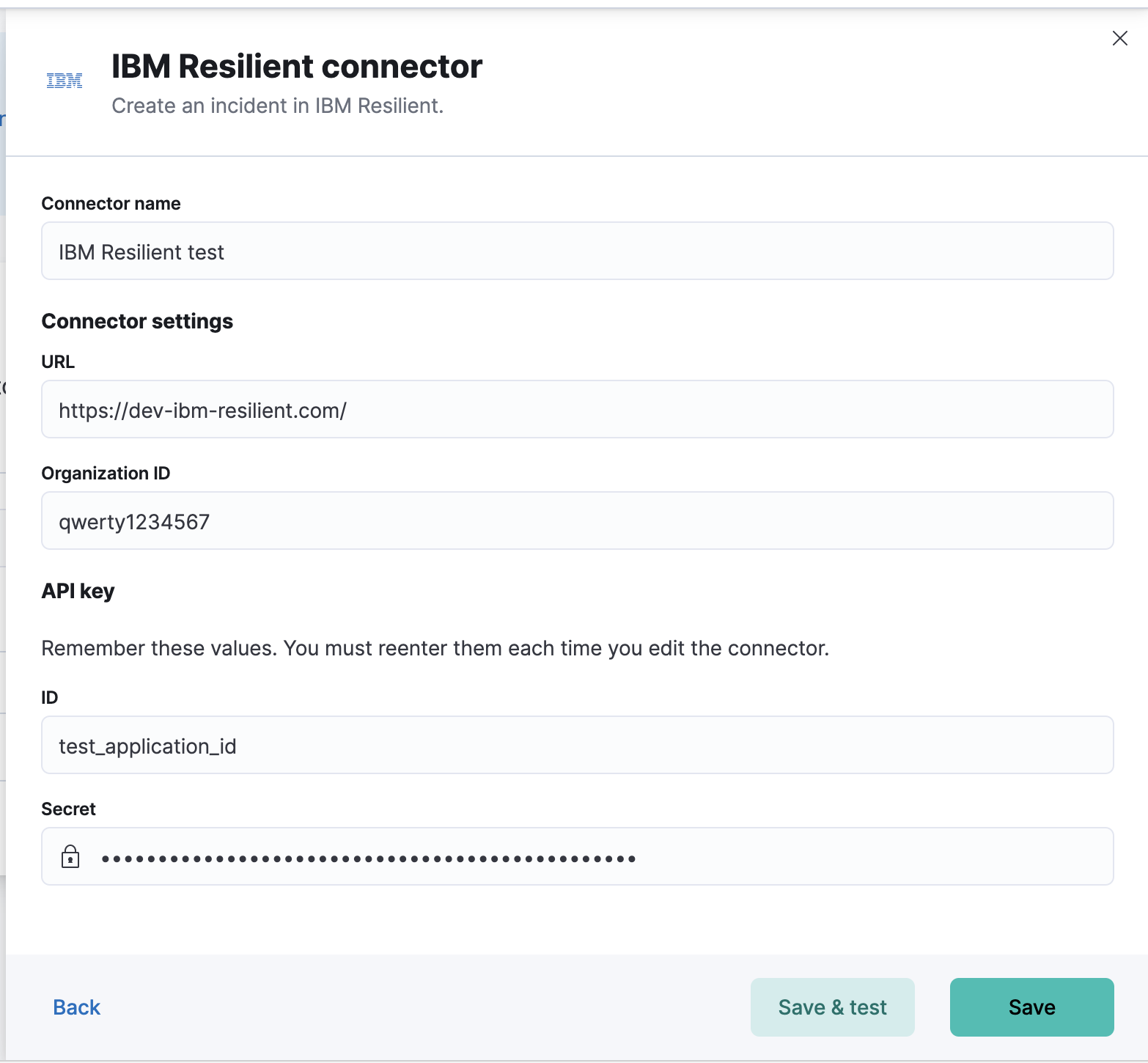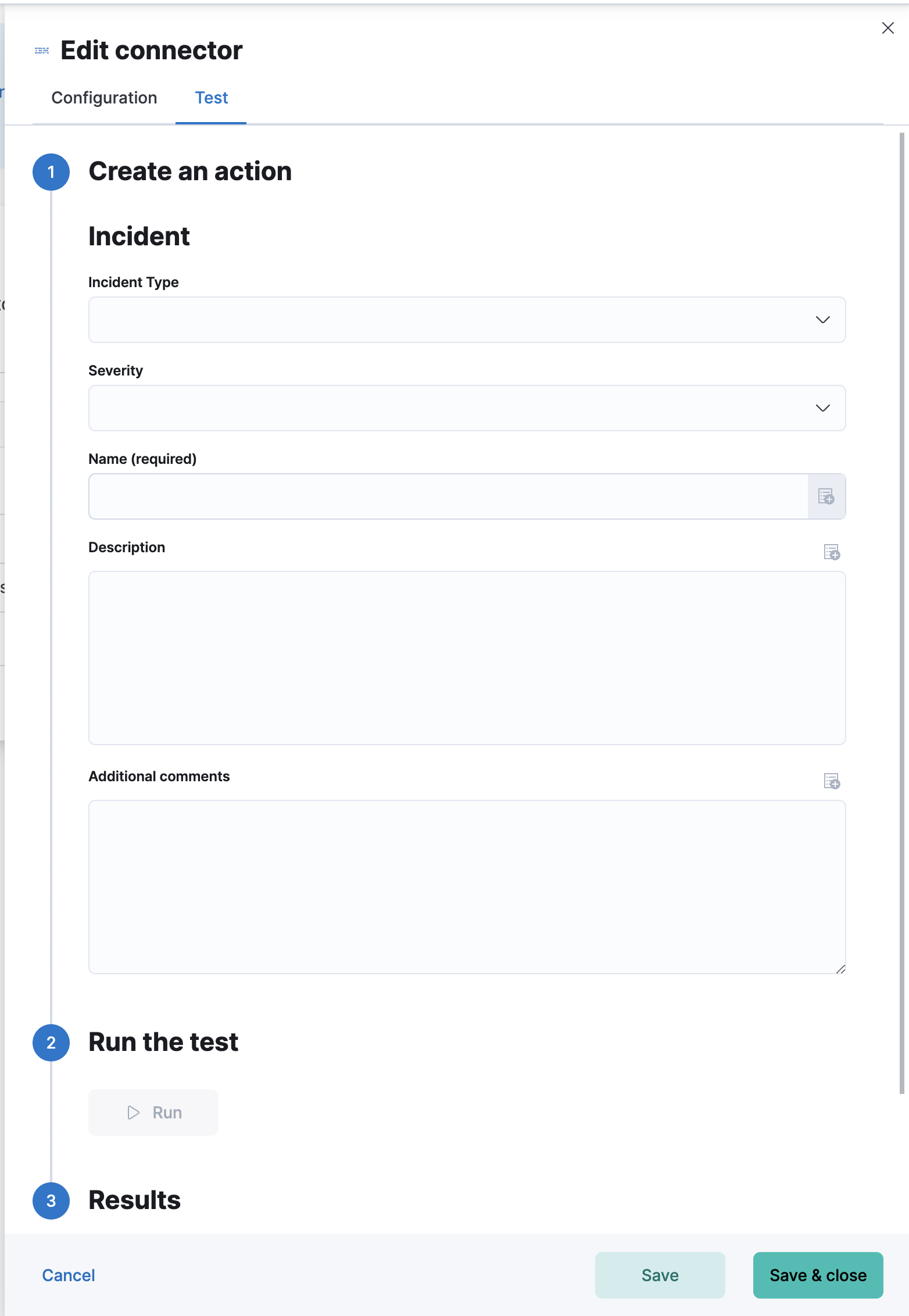IBM Resilient connector and action
editIBM Resilient connector and action
editThe IBM Resilient connector uses the RESILIENT REST v2 to create IBM Resilient incidents.
Connector configuration
editIBM Resilient connectors have the following configuration properties.
- Name
- The name of the connector. The name is used to identify a connector in the Stack Management UI connector listing, and in the connector list when configuring an action.
- URL
- IBM Resilient instance URL.
- Organization ID
- IBM Resilient organization ID.
- API key ID
- The authentication key ID for HTTP Basic authentication.
- API key secret
- The authentication key secret for HTTP Basic authentication.
Connector networking configuration
editUse the Action configuration settings to customize connector networking configurations, such as proxies, certificates, or TLS settings. You can set configurations that apply to all your connectors or use xpack.actions.customHostSettings to set per-host configurations.
Preconfigured connector type
edit my-resilient:
name: preconfigured-resilient-connector-type
actionTypeId: .resilient
config:
apiUrl: https://elastic.resilient.net
orgId: ES
secrets:
apiKeyId: testuser
apiKeySecret: tokenkeystorevalue
Config defines information for the connector type.
-
apiUrl - An address that corresponds to URL.
-
orgId - An ID that corresponds to Organization ID.
Secrets defines sensitive information for the connector type.
-
apiKeyId - A string that corresponds to API key ID.
-
apiKeySecret - A string that corresponds to API Key secret. Should be stored in the Kibana keystore.
Define connector in Stack Management
editDefine IBM Resilient connector properties.

Test IBM Resilient action parameters.

Action configuration
editIBM Resilient actions have the following configuration properties.
- Incident types
- The type of the incident.
- Severity code
- The severity of the incident.
- Name
- A name for the issue, used for searching the contents of the knowledge base.
- Description
- The details about the incident.
- Additional comments
- Additional information for the client, such as how to troubleshoot the issue.
Configure IBM Resilient
editIBM Resilient offers Instances, which you can use to test incidents.